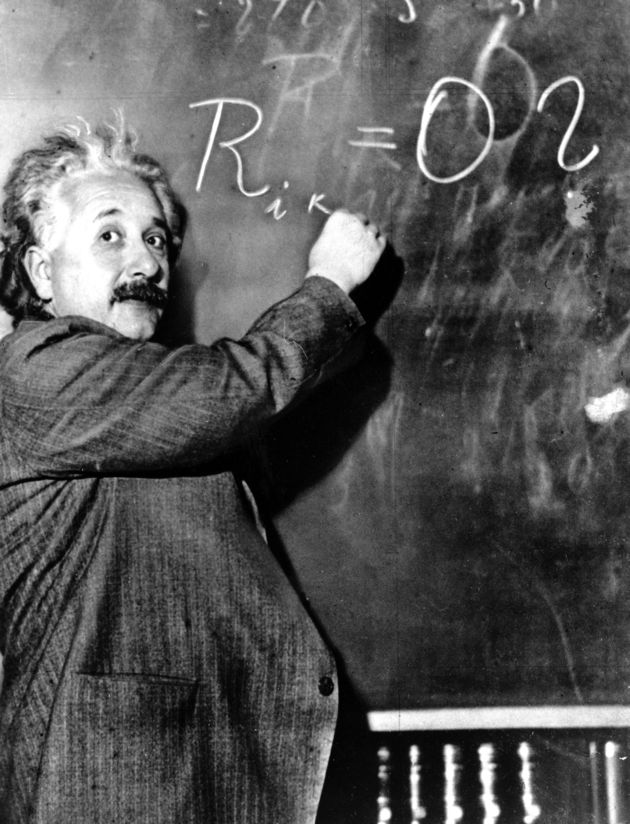Is Einstein the Last Great Genius?

Major breakthroughs in science have historically been the province of individuals, not institutes. Galileo and Copernicus, Edison and Einstein, toiling away in lonely labs or pondering the cosmos in private studies.
But in recent decades — especially since the Soviet success in launching the Sputnik satellite in 1957 — the trend has been to create massive institutions that foster more collaboration and garner big chunks of funding.
And it is harder now to achieve scientific greatness. A study of Nobel Prize winners in 2005 found that the accumulation of knowledge over time has forced great minds to toil longer before they can make breakthroughs. The age at which thinkers produce significant innovations increased about six years during the 20th century.
Don't count the individual genius out just yet, however.
A balance between individual and institutional approaches is the best idea, according to a new theory by a Duke University engineer Adrian Bejan, who thinks institutions benefit most from the co-existence of large groups that self-organize naturally and lone scientists coming up with brilliant new ideas.
"The history of scientific achievement is marked by solitary investigators, from Archimedes to Newton to Darwin," Bejan points out in the December issue of the International Journal of Design & Nature and Ecodynamics. "Solitary thinkers have flourished throughout history because it is natural — science is good for the mind of the thinker and for the well-being of society. Even though the trend is toward the creation of large research groups, the individual will always flourish."
Yet the very notion of individual genius is somewhat overrated, as even some of the geniuses will attest.
Sign up for the Live Science daily newsletter now
Get the world’s most fascinating discoveries delivered straight to your inbox.
Sir Isaac Newton, for example, said that if he had achieved anything with his work, such as his laws of motion and gravity, it was "by standing on the shoulders of giants."
Soviet pressure
The course of modern research changed abruptly after Oct. 4, 1957, when the former Soviet Union became the first nation in space by launching Sputnik, Bejan said. That fueled a dramatic increase in U.S. funding of large research groups within institutions already known for their research, he says. This model was adopted by smaller institutions, which also began forming larger groups to attract funding.
However, individual big thinkers didn't disappear. Bejan argues they continued to thrive. He thinks his "constructal theory," which he began describing in 1996, might explain why.
The theory states that so-called flow systems evolve to balance and minimize imperfections, reducing friction or other forms of resistance, so that the least amount of useful energy is lost. Examples in nature include rivers and streams that make up a delta or the intricate airways of the lungs.
In research done by humans, Bejan sees two main flows: those of ideas in the form of scientific findings, and those of support, measured by tangible factors such as funding and lab space.
"Successful research groups are those that grow and evolve on their own over time," he says. "For example, an individual comes up with a good idea, gets funding, and new group begins to form around that good idea. This creates a framework where many smaller groups contribute to the whole."
Solitary confinement
Extremes are not conducive to productive science, Bejan thinks.
"If an institution is made up only of solitary researchers, it would have many ideas but little support," he said. "On the other hand, a group that is large for the sake of size would have a lot of support, but would comparatively have fewer ideas per investigator."
This problem was epitomized by the old Soviet-style research, where the government decreed the goal and scope of research and populated its monolithic structures with like-minded scientists, Bejan said.
There is no inherent conflict between research empires and the individual, but rather a balance that serves the greater good, as Bejan puts it. And so, institutional administrators should go easy on the individual who shows signs of greatness.
"I would argue that those administrators who coerce their colleagues into large groups solely to attract more funding, to beef up their curriculum vitae or to generate more papers, are acting against the self-organizing nature of the institution and its research," Bejan said. "Complete coalescence into large groups does not happen and will not happen."
Bejan's thinking, it should be noted, is supported by funding from the National Science Foundation.
The next Einstein?
Some might argue that the nature of genius is such that it can't be quashed, regardless.
Those who use their minds to great ends are known to work at it. A 35-year study in 2006, which looked at mathematically gifted children to see what they ended up doing with their lives, revealed the ingredients of a great and productive mind: cognitive abilities, educational opportunities, interest, and plain old hard work. Not everyone who starts out smart ends up brilliant.
So when will the next Einstein emerge?
That's a question even an Einstein can't answer. But it's worth noting that two centuries separated Einstein from Newton, considered by many his greatest intellectual rival. That means the next Einstein might be a baby now, or perhaps is yet to be born.
- Vote Now: The Greatest Modern Minds
- Recipe for Genius Revealed
- Geniuses are Just Like Us
This article is from the LiveScience Water Cooler: What people are talking about in the world of science and beyond.
Robert is an independent health and science journalist and writer based in Phoenix, Arizona. He is a former editor-in-chief of Live Science with over 20 years of experience as a reporter and editor. He has worked on websites such as Space.com and Tom's Guide, and is a contributor on Medium, covering how we age and how to optimize the mind and body through time. He has a journalism degree from Humboldt State University in California.











